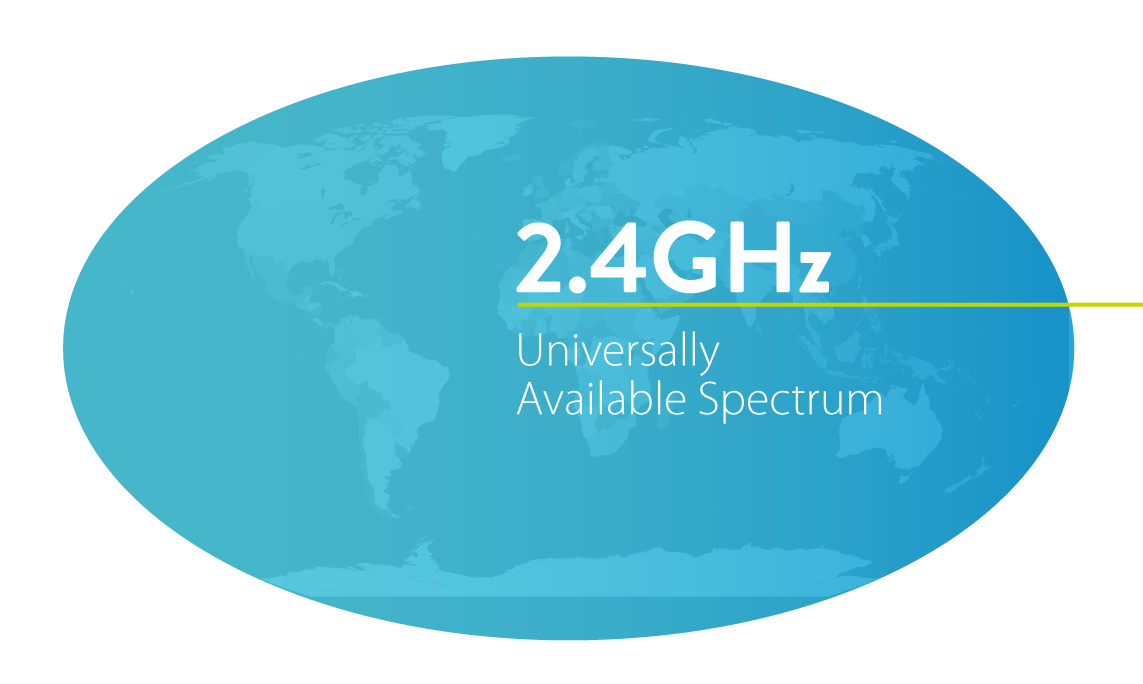2.4 GHz. Truly Global.
RPMA® (Random Phase Multiple Access) uses the 2.4 GHz ISM band. The 2.4 GHz band is available as one continuous band in every country on the planet. That is truly global. It is not limited as are regional or zoned devices such as those on LoRa™ or Sigfox® technology. And, there is no trying to pack support for a dozen LTE bands into one module like the ever-growing list of cellular-based standards in the works.
We designed RPMA to use the 2.4 GHz band so that our partners can access the global market with one device.
This is good for all of our partners, and it’s good for consumers. Our partners have the easiest possible access to a global market. A startup in Brazil can not only serve its local market with RPMA-enabled devices but it can also immediately compete and gain first-mover advantage on the global market by using RPMA’s ubiquitous wireless band. Consumers get better and cheaper products because device makers compete with device makers from all over the world. Our use of the 2.4 GHz band taps into the benefits of a global marketplace. That is truly global spectrum.

MORE BANDWIDTH. EVERYWHERE.

The 2.4 GHz band has 80 MHz of spectrum. A single RPMA channel takes up 1 MHz. That means RPMA can have 40 channels worldwide with 1 MHz buffer channels to each side. Compare this to Sigfox or LoRa technology bandwidth availability. Everywhere in the world but North America and Australia they have 1.25% the amount of bandwidth that is available to RPMA in the 2.4 GHz band. In Australia and North America, RPMA still has nearly 7x the bandwidth than that available to the LoRa and Sigfox technologies.
The IoT is supposed to grow dramatically, and only RPMA is positioned to serve the tens and hundreds of billions of devices that will need connectivity as it grows in the coming years.
That’s our vision and we can deliver on that because we have more bandwidth, everywhere.

